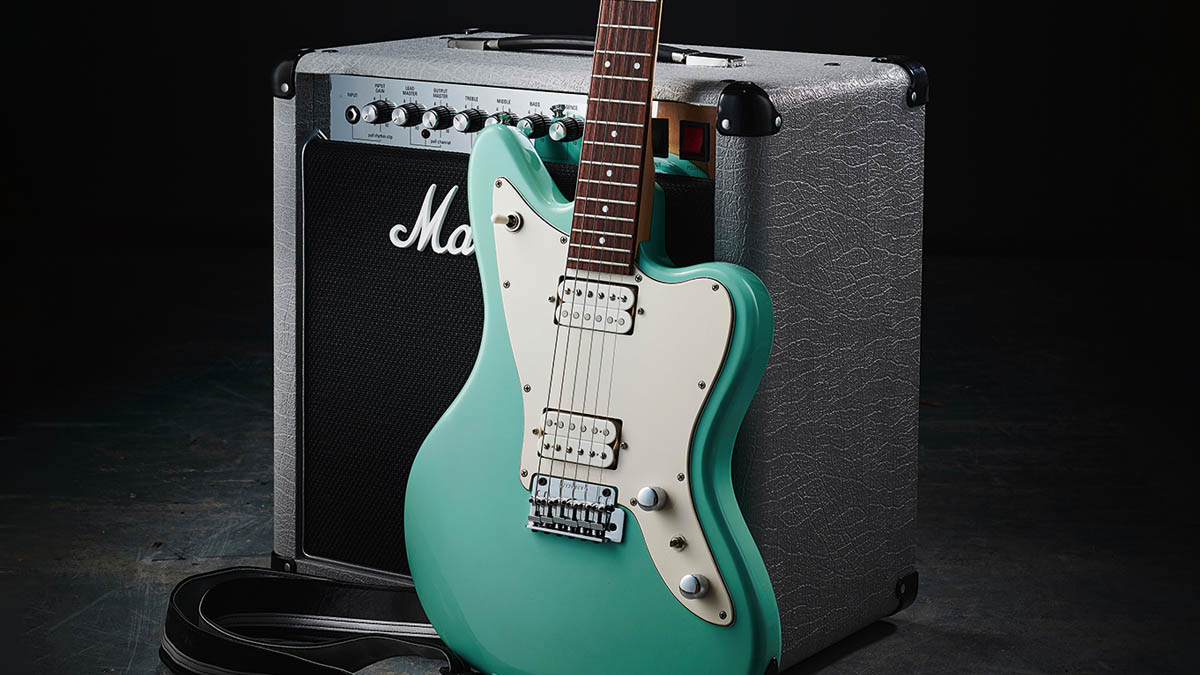Unhappy with your electric guitar sound? Start with these 5 tone tips before you try anything else
Because great tone begins with getting the fundamentals right, from picks and strings through to pedals

GUITAR SHOWCASE 2023: Guitar tone isn’t just a problem you throw lots of money at and then it is sorted. Buying top-quality gear does help but there are things that players of all levels, with all rigs, can do to get the most out of their sound.
These 5 steps will help you think about tone and give you the fundamentals before going down the rabbit hole. And that’s the thing – tone is a journey without a destination, but you’ve got to start somewhere.
1. Experiment with different strings

The material your strings are made of fundamentally affects your guitar tone. Of course, electric guitars require metal strings in order for the magnetic pickups to work, however, string manufacturers offer a range of alloys, each with different tonal properties.
lain steel and nickel-wound steel are most common for unwound/wound electric guitar strings respectively. Rotosound’s Ultramags are a ‘highly magnetic’ string which they say gives more power and sustain. Ernie Ball’s Cobalt series ‘maximises output and clarity’. You can judge their claims for yourself, but our experience is that materials do matter!
2. Get plucky!

Not all guitar picks are equal, and yes, they certainly can affect your tone. Eric Johnson and John Petrucci have each made use of Dunlop Jazz IIIs, both tweaking the shape of the point and edges for a smoother glide across the strings. The Edge uses Herdim Blue picks, plucking the strings with the textured end for a brighter, er, edge to his sound.
Famously, Brian May uses an Old English Sixpence for his trademark tones. More fundamentally, the thickness of your pick can affect tone. Thin picks have a lovely gentle sound for strumming, for example.
3. Set your amp levels

Your main aim is to set your guitar amp so that it’s always at a suitable level and has the desired tone when your guitar and any effects are plugged in. Here are some basics:
All the latest guitar news, interviews, lessons, reviews, deals and more, direct to your inbox!
- Begin with the master volume knob set between zero and two, so you can hear yourself without blowing your ears off.
- Keep all tone controls at their midway points, not zero, so you can make tone cuts or boosts as required.
- If using a multi-channel amp, check each channel is roughly the same volume – it’s not always obvious from the position of the knobs, so listen carefully!
- A gain control will add distortion, but it’s dependent on the level of your guitar output, so make sure your instrument’s volume is maxed out while you get set up.
- If you run your amp (especially a tube amp) loud, eg, at a gig, you will usually need less gain than you did in your living room. With your core tone set, practise with higher volumes.
4. Pedals: aim for unity

We’ll look at individual effects later on, but, as regards the very basics, just like your amp, you need to check the levels of your effect pedals. Play each pedal one by one, with all the others switched to bypass/off.
Unless you’re dialling in a volume boost (eg, for a bit of a kick during a solo), your best starting point is to be at ‘unity gain’ – which simply means the volume stays the same, with or without the pedal engaged.
When you know your amp and pedals are at unity gain, it’s easier to make changes to the levels where you really need them. Low output? Check your power supply. Failing batteries and mismatched ‘wall-wart’ power supplies can make your pedals act up.
5. Go premium with cables

Budget guitar cables are usually a false economy. Though not always the case, cheap leads are generally more susceptible to picking up microphonic noise and are more likely to fail under the rigours of general use. A small upgrade in price to a premium cable (which often includes a substantial warranty) is worth the extra outlay.
Brands such as Mogami, D’Addario, Planet Waves, Ernie Ball, Fender and many more will see you right. You’ll need an ‘instrument’ T/S jack to jack cable in most cases. Opt for the shortest cables you can.
Tone-sapping capacitance increases with longer cable runs. Gold-plated plugs offer minimal sonic improvements but won’t corrode, ensuring the best signal flow.
Chris was Editor of Total Guitar magazine from 2020 until its closure in 2024, when he became Lesson Editor for Guitar World, MusicRadar and Guitar Player. Prior to taking over as Editor, he helmed Total Guitar's world-class tab and tuition section for 12 years, helping thousands of guitarists learn how to play the instrument. A former guitar teacher, Chris trained at the Academy of Contemporary Music (ACM) in Guildford, UK, and held a degree in Philosophy & Popular Music. During his career, Chris interviewed guitar legends including Brian May and Jimmy Page, while championing new artists such as Yungblud and Nova Twins. Chris was diagnosed with Stage 4 cancer in April 2024 and died in May 2025.

